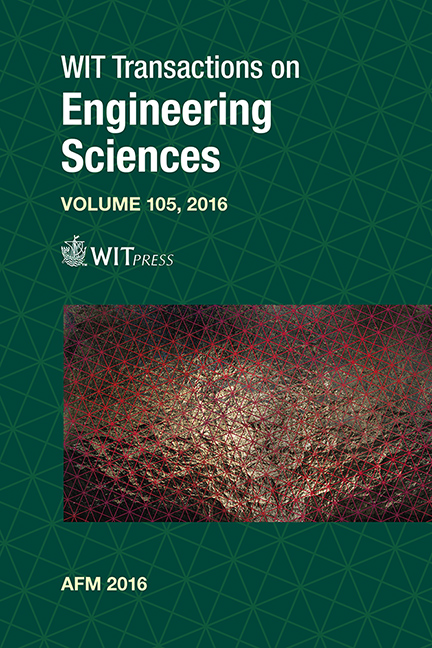Rheological Behavior Of Waste Polypropylene Reinforced With Zinc Oxide Nanoparticles
Price
Free (open access)
Transaction
Volume
105
Pages
11
Page Range
201 - 211
Published
2016
Size
910 kb
Paper DOI
10.2495/AFM160171
Copyright
WIT Press
Author(s)
N. J. Hadi, N. A. Saad, D. Alkhfagy
Abstract
The present paper investigates the influences of ZnO nanoparticles on the rheological behavior of waste polypropylene and their relationship with surface morphology. The modified composites are composed of waste polypropylene and ZnO nanoparticles in the content of 3, 5, 7 and 10 weight percentages. Two techniques are used to incorporate nanoparticles in the polypropylene matrix. The first one uses an ultrasonic device to distribute nanoparticles in an alcohol solvent and the second uses a rotating twin screw extruder at 25 rpm and at 190°C to produce a polymer nanocomposite sheet. Different microstructure and morphological techniques (X-ray diffraction XRD and field emission scanning electron microscopy FESEM) are used to evaluate the effect of the additive percentage (ZnO nanoparticles) and processing technique (ultrasonic and twin screw extruder) on the microstructure and morphology of the nanocomposite. Also, various rheological (melt flow rate MFR and melt volume rate MVR) and physical (solid and melt density) properties are studied. The results of the XRD test show that the crystallinity level increases with the increase in ZnO nanoparticle percentage while the results of FESEM show that the sonication process and twin screw extruder gradually reduces the agglomeration of ZnO nanoparticles in the polypropylene matrix. The results of the rheological test show that there is an improvement in the viscosity of the nanocomposite (decreasing in MFR and MVR) with the increase in ZnO nanoparticle percentage. Also, the density results show a big difference between the solid and melt states.
Keywords
waste polypropylene, ZnO nanoparticles, MFR and MVR, flow behavior, twin screw extruder





